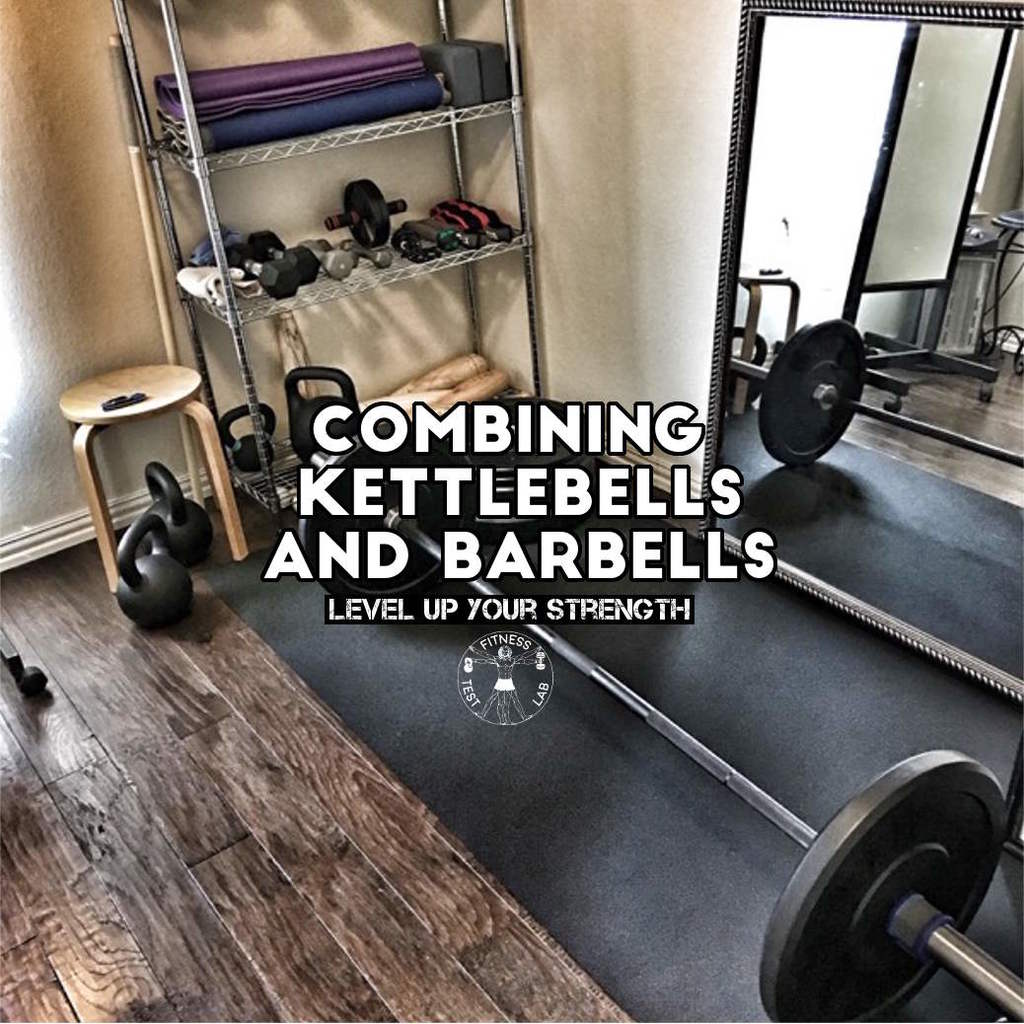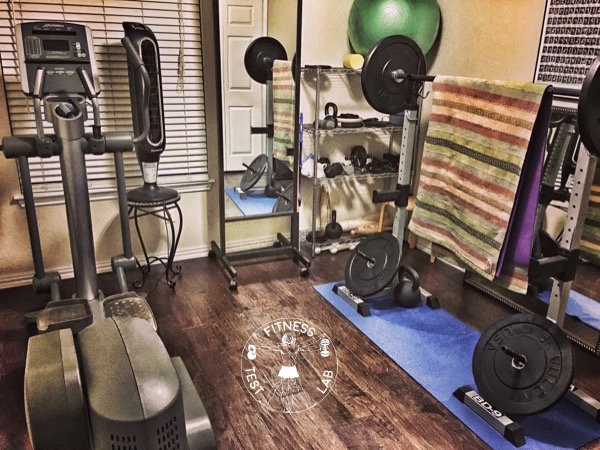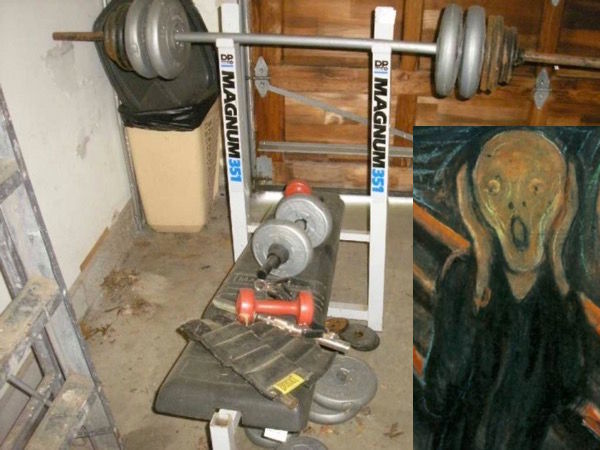Level Up Your Strength by Combining Kettlebells and Barbells

There’s a lot of information available online these days on the topic of strength training. The sheer amount of information can be overwhelming, especially for someone new to the topic. It really doesn’t need to be complicated. Learn to push and learn to pull. Move often. Eat right. Everything else will fall into place.
Okay, so it isn’t quite that simple. But almost. A strength training routine doesn’t need to be fancy, especially if you’re not focusing on bodybuilding or muscle hypertrophy. I don’t focus on either of those. I just want to stay mobile, age gracefully, and leave a good looking corpse.
I routinely use kettlebells for strength and conditioning. They’re compact, relatively inexpensive, and versatile. But they only go so far. Strength is built primarily through progressive overload, and there’s only so much load that can be applied with kettlebells.
Enter the barbell. The most straightforward way there is to build a solid foundation of strength is through old-school push and pull movements with a barbell and weight plates, aka compound lifts – the squat, deadlift, and standing overhead press. Bench press and barbell rows are also good additions, but the first three are the most important.
Strength isn’t just for athletes
I can hear the groans from my fellow engineers as I type this. Squats? Deadlifts? This is the stuff jocks did in high school! Yes, but there were good reasons why they did it. The work kept them strong and mobile. Fast forward 20+ years – being strong and mobile is still important even for those of us who don’t play sports. I’ve added compound lifts to my regular kettlebell regime to round out my strength training and I hope to make a solid case to convince you to do the same.
I also train for mobility to counteract the daily effect of sitting at a desk all day. I’ve covered this in a little more detail in my review of the excellent Stick Mobility system, which I recommend reading.
Level up your strength
For the record, I’m an engineer first and foremost. I’m not an athlete, personal trainer, or coach of any kind. I was never athletic as a child and didn’t pay much attention to sports, preferring instead to read, play video games, or ride my bike around town. I mention all this because I want to make clear that being strong doesn’t just benefit athletes. It benefits everyone.
As we age, our bodies start to break down. Starting in our late 20’s or early 30’s, we start losing strength, muscle mass, and mobility as we age. Physically inactive people can lose as much as 5% of their muscle mass each decade past age 30!
The process is inevitable (curse you entropy!), but it can be slowed and even reversed in some cases by actively building strength and mobility. Strength and mobility can be applied in everyday life, whether it’s moving heavy furniture or picking up your kids. I certainly don’t want to live forever, but I don’t want to be a decrepit old man either. I want to be mobile and self-sufficient well into my advanced years and I’m building that foundation now. You should too.
Don’t cheap out on equipment
When pricing out equipment for your home gym you’ll inevitably find cast iron plates for significantly less than rubber bumper plates. You may be tempted to save money with the cheaper option. I’d advise against it, especially if your gym consists of a spare bedroom like mine does:

My home gym, aka “The Lab”
As you can see, my ‘home gym’ has wood flooring. The last thing I want is to ruin that floor by dropping an iron plate on it and cracking the wood. If I did it would be ridiculously expensive to repair or replace. I prefer to avoid that scenario altogether by using rubber bumper plates.
Bumper plates are actually designed to be dropped. They were developed as a way to allow Olympic lifters to keep setting new records without having to control the weight on the way down. Once a lift is complete, the weight is simply dropped. Well designed bumper plates absorb the shock of impact without damage to the floor, plates, or bar. Thanks to the popularity of sports like powerlifting and CrossFit, bumper plates and Olympic bars are widely available and reasonably priced.
Even though I don’t practice Olympic lifts or CrossFit, using bumper plates in my home gym gives me peace of mind in knowing my floor will survive if I accidentally drop a weight or have to bail on a lift attempt.
I started with a 160lb set of black bumper plates from Vulcan Strength Training Systems. They’re reasonably priced, high quality, and they sure look nice in my home gym. I’m working on a review of these bumper plates and an Elite Powerlifting bar, I’ll update this section with a link once it’s up.
Update: the reviews are up, the bumper plate review is here and the powerlifting bar review is here.

Many of us old timers grew up lifting weights with cement plates. Nostalgia aside, I don’t recommend them for your home gym either. The bars made for use with cement plates are too thin for effective squatting and deadlifting. The cement plates may not only damage your floor if dropped, they can crack like a nut leaving you out of a plate.
Plus, they’re just plain damn ugly:

Don’t be this guy
The up-front savings you’d see from going cheap may end up costing more in the long run. Splurge for a decent Olympic bar and set of bumper plates. You won’t regret it. If by some chance you ever decide to stop using them, bumper plates have a higher resale value on Craigslist than cast iron or cement plates.
You’ll also need a good pair of squat stands. It’s not necessary to get a full blown power rack, especially if space is at a premium. Check Craigslist first, but if you can’t find something suitable and need a recommendation I’ve found the Valor Fitness BD-9 is a very decent option that can be purchased new for under $200 on Amazon. I found mine on Craigslist and I’m very happy with it.
A simple training plan
I exercise in the morning every day before work. For the sake of time, I limit my routines to 30 minutes or less. I exercise before eating breakfast and my goal with each routine is to get in just enough volume to break a good sweat and energize me, but not so much that I’m drained for the rest of the day.
I run a kettlebell club at work on Tuesdays and Fridays. On Mondays, Wednesdays, and Thursdays I do workouts combining kettlebells and barbells at home. I’ve structured my home workouts with a combination of push/pull and kettlebell/barbell movements every day. The kettlebell work provides the pull on Mondays and Wednesdays while the barbell provides the push. On Thursdays it’s the other way around. Here’s a breakdown of what I do, not including warm up:
Monday
3 rounds:
- 10 kettlebell snatches with each hand
- 5 low bar squats
Wednesday
3 rounds:
- 50 alternating hand kettlebell swings
- 5 standing overhead presses
Thursday
3 rounds:
- 2 Turkish get-ups on each side (I alternate sides with each rep)
- 5 deadlifts
At the time I write this article I’m using a 16kg kettlebell. I periodically add weight to the barbell to continue making strength gains. Speaking of which, bumper plate sets don’t typically include 2.5lb and 5lb weights. These sizes are important for making continued strength gains. Not everyone can go up 20lbs at a time (10lb plate on each side)! I bought pairs of 2.5lb and 5lb steels plates for this purpose. I don’t mind using steel in this case because they’re small and light. The risk of dropping them is low and even if I do the potential for damage is minimal.
You may notice there’s no benching in my program. This is by design. The bench press is a fine exercise, I just don’t see it as crucial for my personal fitness. I’m not looking for a big chest and I can’t remember the last time I found myself flat on my back needing to push a heavy weight off me. I do plenty of push ups during my kettlebell club meets and that’s enough for me. Your needs may differ, adjust accordingly.
Wrap up
Strength is a worthwhile pursuit, regardless of your age or current fitness level. You don’t need to be an athlete to benefit from strength, and if you’re 30 or older you absolutely should train for strength to counter the effects of aging. Level up your strength by combining kettlebells and barbells to build a solid foundation for everyday living.
About the Author Mario
I'm a software product manager with a full-time job, family, and a desire to stay strong, mobile, and fit. I separate fact from fiction to find the most effective and affordable options for home fitness. If you'd like to build your own home gym, start here.
Popular posts
Session expired
Please log in again. The login page will open in a new tab. After logging in you can close it and return to this page.
